JVC VN-V225U Handleiding
JVC
Bewakingscamera
VN-V225U
Bekijk gratis de handleiding van JVC VN-V225U (2 pagina’s), behorend tot de categorie Bewakingscamera. Deze gids werd als nuttig beoordeeld door 63 mensen en kreeg gemiddeld 4.6 sterren uit 32 reviews. Heb je een vraag over JVC VN-V225U of wil je andere gebruikers van dit product iets vragen? Stel een vraag
Pagina 1/2

VN-X235U is a high definition surveillance camera that uses CCD sensors with 4 times higher resolution
than VN-V225U.
Thank you for purchasing this JVC product.
Before operating this unit, please read the instructions carefully to ensure the best possible performance.
䡵The latest version
Please visit V.NETWORKS web site to check the latest firmware at
http://www.jvc-victor.co.jp/english/products-e.html
(The latest firmware can be found on V.NETWORKS B download page)
Installation
This manual describes procedures for “direct mounting to the ceiling or the wall”. For details on how to
“embed the camera into the ceiling”, “mount the camera with the cable pulled out from the side” and other
procedures, refer to [INSTRUCTIONS (Installation)] (pdf) in the supplied CD-ROM.
Note:
●Be sure to put on protective glasses to protect your eyes from falling objects when mounting the camera
to the ceiling.
●To mount the camera using an electrical box, please consult the dealer shop from which the camera is
purchased or any nearby JVC Service Centers.
Preparation
TTo mount the camera to a wall, perform the same procedures below but replace the word “ceiling” with
“wall”.
1Use the supplied template to open a hole in the ceiling (R35 mm), and pull out the
cables from the hole
Pull out the fall prevention wire, LAN cable, power cable, alarm cable, and audio cable that are attached to
the ceiling slab from the hole. (Fall prevention wire is not provided)
Note:
●Take note of the length, strength, pull and material (insulation) of the fall prevention wire.
●The inner diameter of the ring section of the fall prevention wire to be mounted to the camera should be
between R3.1 mm and R5.5 mm, and the outer diameter not larger than R9 mm.
2Turn the dome cover in the anti-clockwise direction to remove it
To prevent damage to the dome cover, a protection sheet is affixed.
3Grasp the inner dome and remove it from the catches (x2)
4Remove the outer casing
ALoosen and remove the fastening screw from the camera body using a screwdriver
BTurn the camera unit in the anti-clockwise direction to remove the outer casing
5Remove the attached fall prevention wire
Remove the fall prevention wire that is attached to the camera unit.
Cable Connection
For safety reasons, turn on the power only after all the connections are completed.
1Align the shooting direction with the shooting direction mark (j), followed by
mounting the outer casing to the ceiling
2Mount the supplied fall prevention wire on the camera unit to the fastening hook
3Mount the fall prevention wire that connects the camera and the ceiling to the camera
unit
4Connect the alarm cable
Connect the alarm cable to an external device, such as a sensor or buzzer.
5Connect the audio cable (shielded cable recommended)
6Connect the LAN cable
TTo use the PoE power supply, connect to a PoE-compatible device and supply the power from the LAN
cable.
●Connecting to HUB : Use a straight cable
●Connecting to a computer : Use a cross cable
7Connect the power cable
Power can be supplied to this unit either by connecting to an AC 24 V power supply or using PoE.
(For details on the use of PoE A [6 Connect the LAN cable])
Note:
●The power cable includes cable of the same color as the alarm cable. Check properly before connecting.
●Make sure that power is supplied using only one of the above methods at any one time. Connecting
simultaneously using the power cable and to PoE via a LAN cable may cause the camera to break down
or malfunction.
●By default the IP addresses of all the cameras are set to 192.168.0.2. If the power of multiple cameras
within the same LAN environment are turned on at the same time, the IP addresses of the cameras
overlap, thus preventing proper access. As such, make sure to turn on the power of the cameras one by
one and set the IP addresses such that there is no overlapping.
䡵Cable Types
䡵Power cable: Connection distance when using a 2-core VVF cable (reference values)
Note:
●For cables that are not used, be sure to wrap the ends individually with insulating tape.
●For safety reasons, turn on the power only after all the connections are completed.
Mounting the Camera Unit
1Insert the hooks (x2) of the outer casing into the holes (x2) of the camera unit
Note:
●Pay attention to prevent cables from being caught by the outer casing.
2Turn the camera unit in the clockwise direction
3Fasten the camera unit by tightening the fastening screw on it
Note:
●The camera will not be secured just by turning it in the clockwise direction. Be sure to fasten it with the
camera unit fastening screw.
This section describes procedures for adjusting the video image while checking the actual image on the
monitor.
Before touching the body of the camera, make sure that you touch the metal surface of the [MONITOR]
terminal to discharge any static electricity from your body. The static electricity may cause the camera to
malfunction.
1Connect the [MONITOR] terminal to the test monitor
2Set the [MONITOR OUT] selection switch to A BN or A BP , then turn on the power or
press the [RESET] button shortly (less than 2 seconds)
●The camera reboots. (approximately 1 minute)
●During rebooting, the [STATUS] indicator lights up in orange.
●Set to A BN when connecting to an NTSC monitor, and set to A BP when connecting to a PAL monitor.
3Adjust the shooting direction of the camera
Adjust the pan, tilt and rotation controls of the cameras to face the lens towards the subject.
Memo:
● ⬚ ⬚Rotate the lens in the pan and rotation directions ±175 and ±100 respectively from the positions
aligned with the camera’s shooting direction mark, pan center mark and rotation center mark. Be sure to
hold the rotation control and adjust the rotation without holding the lens section.
●After adjusting the field angle, tighten the tilt fastening screw to secure the camera so that its field angle
does not go out of alignment.
Note:
●Moving the camera when it has exceeded the adjustment range may cause its performance to
deteriorate.
●As the tilt and rotation range of this unit is wide, part of this unit may be reflected in the shooting screen
depending on the field angle and direction.
●Do not hold the lens section when adjusting the camera direction. The lens section may be damaged if
you apply force to it.
4Adjust the image size
Loosen the fastening screw of the zoom adjustment ring, move the ring to the left and right to adjust the
image size. After adjustment is complete, move the fastening screw toward the direction of the lens
(direction of the subject), and tighten accordingly.
5Roughly adjust the focus
ALift the focus adjust gear knob, and insert the catch into B in the diagram.
●The gear is disengaged.
Note:
●To prevent the gear shaft from breaking when the gear is opened too far out from B, remove the gear
shaft from the bearing (C in diagram). In this case, re-insert the shaft back into the bearing and return it
to the original position before using.
BLoosen the fastening screw of the zoom adjustment ring, move it to the left and right to adjust the focus.
6Fine adjust the focus
APress the [RESET] button for at least 2 seconds but less than 5 seconds.
●The camera enters the focus adjust mode and the [STATUS] indicator blinks in green and orange
alternately.
●The image is sharpened with the opening of the aperture.
●The center of the image is enlarged. (VN-X235U only)
●After adjusting the focus, press the [RESET] button for at least 2 seconds but less than 5 seconds to
cancel the focus adjust mode.
BShoot the subject.
CFine adjust the focus.
●Return the catch to A in the diagram, and then rotate the focus adjust gear knob to adjust the focus to
the optimum position.
DRotate the focus adjust gear knob about one base pitch in the direction of the arrow in the diagram.
●This is to correct the focus shift when mounting the dome cover.
ERemove the protective sheet, hold the dome cover over the lens and check the focus. After checking,
replace the protective sheet on the dome cover.
7Hold and press the focus adjust gear between your fingers in the direction of the
arrows in the diagram, and tighten the fastening screw of the focus adjustment ring
8After setting the [MONITOR OUT] selection switch to AOFFB, press the [RESET] button
shortly (less than 2 seconds)
●The camera restarts, and the focus assist mode is released. (approximately 1 minute)
Mounting the Dome Cover
After setting is complete, mount the dome cover.
1Mount the inner dome to the catches (x2)
2Mount the dome cover
ARemove and clean any dust or dirt on the dome cover.
BAlign the camera with the position alignment mark on the dome cover, and mount the dome cover.
3Remove the protective sheet
Note:
●When the cover is removed again after mounting the dome cover, check the field angle and re-adjust the
focus and field angle if necessary.
●Check to ensure that the dome cover is firmly mounted. The cover may fall off if it is not properly
mounted.
K
Continued on reverse side
䡵This manual contains the basic instructions for using this unit.
Please refer to [INSTRUCTIONS (Setting)] (pdf) and [INSTRUCTIONS (Installation)] (pdf) in the CD-ROM
supplied with this product for description on the detailed usage of this unit.
For the latest information, please refer to the A BREADME file in the CD-ROM supplied with this product.
●The supplied CD-ROM includes [INSTRUCTIONS (Setting)] (pdf), [INSTRUCTIONS (Installation)]
(pdf), [API Guide] (pdf), [VSIP Guide] (pdf), [Search tool], and [White Spot Correction Tool].
䡵How to read this READ ME FIRST
●JVC holds the copyright to this manual. Any part or all of this manual may not be reproduced without prior consent
from the company.
●Windows is a registered trademark of Microsoft Corporation in the U.S.
●Product names of other companies described in this manual are trademarks or registered trademarks of the
respective companies. Symbols such as 姠 姞, and 姝 are omitted in this manual.
●Design, specifications and other contents described in this manual are subject to change for improvements without
prior notice.
Mounting the Camera
FIXD IP DOME CAMERA
VN-V225U
FIXD MEGAPIXEL IP DOME CAMERA
VN-X235U
READ ME FIRST
LST0930-001A
1
2
B
A
3
5
4
4
Camera unit
fastening screw
Inner dome
Dome cover
protective sheet
LAN cable
R35 mm
Fall prevention wire
(Not supplied)
Cables (power cable,
alarm cable, audio
cable, etc.)
Approx.
100 mm
outer casing
Alarm cable to be used (shielded cable recommended)
●Length of 50 m or shorter
●UL1007, UL1015 or equivalent products
●AWG#22 to AWG#18 or equivalent products
LAN cable to use
●STP (shielded cable recommended)
●Length of 100 m or shorter
●Category 5 and above
Type Color Signal name
Alarm cable Black
(Shielded cable)
Red Alarm input 1
Brown Alarm input 2
Orange Alarm output 1
Yellow Alarm output 2
Black GND
Audio cable Pink
(Shielded cable)
White Microphone input
Yellow GND
Black
(Shielded cable)
White Line output
Yellow GND
Power cable Red (Unshielded cable) AC 24 V Power Supply
Black (Unshielded cable)
Conductor diameter (mm) R1.0 and above 1.6 and above 2.0 and aboveR R
Maximum connection distance (m) 130 340 540
Caution
The rated power of this product is AC 24 V, 50 Hz/60 Hz. Make sure to use it with the correct voltage.
Be sure to use an AC 24 V supply that is insulated from the primary power source.
Supplying a power beyond the rated value may result in failures, smoke or fire. If the camera breaks down,
turn off the power and contact our service center immediately.
When a power beyond the rated value is supplied, the internal components may be damaged even if no
abnormality is found on the appearance and operation of the camera. Contact our Service Center
immediately to arrange for an inspection (charged separately).
FRONT
UP
3
2
1
6
4, 5, 7
Solder welding or
crimping
Wind the insulation tape
Attach to fastening
hook
Align with shooting
direction
Fall prevention wire
(Not supplied)
Outer casing
mounting
screw
Below 2 mm
Adjusting Images
3
1
2
Hooks (x2)
Camera unit
fastening screw
Holes (x2)
1
2 , 6 3
[MONITOR] terminal
75 K terminated
Test monitor
Tilt : ±80 ⬚
Pan : ±175 ⬚
Rotation : ±100 ⬚
Shooting direction
mark
Pan center mark
Rotation center
mark
Rotation control
(x2)
[MONITOR OUT] selection switch
[RESET] button
Tilt fastening screw
[STATUS] indicator
6 7
5
Zoom adjustment ring
Focus adjustment ring
Focus adjust gear
One base pitch
A
B
Catch
A
B
Catch
Knob
Knob
C
2
1
3
Dome cover
Position alignment mark
Inner dome
Protective sheet

Setting
This section is a description based on Windows XP.
IP address setting procedure
Follow the procedure below to configure the IP address of the camera.
Step1 IP address setting at the computer
K
Step2 Internet Explorer settings
K
Step3 Connecting the camera to the computer
K
Step4 IP address setting for the camera
Step1 IP address setting at the computer
The default setting of the camera is A static IPB (DHCP client function disabled). After starting up the
camera, the system is started with the following IP address. Set the IP address of the computer for setting to
enable communication with the following. (For example, 192.168.0.100 for IP address and 255.255.255.0 for
subnet mask)
IP address : 192.168.0.2
Subnet mask : 255.255.255.0
Default gateway : None
䡵IP address setting at the computer
Set the computer to an IP address that enables communication with the camera.
1Click [Start]
●Select in the sequence of [Control Panel]- -[Network Connection] [Local Area].
Windows Vista :
●Select in the sequence of [Settings]- - -[Control Panel] [Network and Sharing Center] [Manage
network connections].
2The computer on which Internet Explorer is launched automatically selects the
connected network
●Right-click and select [Properties].
●Check to ensure that the [Client for Microsoft Networks] and [Internet Protocol(TCP/IP)] check boxes are
selected.
Windows Vista :
●Check to ensure that the [Microsoft Network Client] and [Internet Protocol Version 4(TCP/IPv4)]
check boxes are selected.
3Select [Internet Protocol(TCP/IP)] and click [Properties]
Windows Vista :
●Select [Internet Protocol Version 4(TCP/IPv4)] and click [Properties]
4Set the IP address
ASelect [Use the following IP address].
BSpecify the [IP address]. (For example, use 192.168.0.100 when the camera is in its default settings)
Memo:
●Make sure that you take note of the original IP address before altering.
●Ensure that a duplicate IP address is not specified within the same network environment.
CSet [Subnet mask] to a value that is appropriate for the setting operation. Consult the network
administrator if you have any queries. (Use 255.255.255.0 when the camera is in its default settings. )
DWhen a [Default gateway] is present, make use of the corresponding IP address (e.g., 192.168.0.254).
EClick [OK].
5Click [OK] on the [Local Area Connection Properties] screen
Step2 Internet Explorer settings
1Launch the Internet Explorer on the computer
2If proxy settings are enabled in the Internet Explorer, follow the steps below to disable
the proxy of the Internet Explorer
●
Select in the order of [Tool]
-
[Internet Options]
-
[Connections]
-
[LAN Setting], followed by deselecting the
check for [Use a proxy server for your LAN] under [Proxy Server] of the [Local Area Network (LAN) Settings]
window.
3
If the active script of the Internet Explorer is disabled, follow the steps below to enable it
●Select [Trusted sites] under [Tool]-[Internet Options]-[Security]. Upon doing so, the [Sites...] button
directly below becomes active. Click this button, deselect the check in the displayed window, and add the
following web site to the zone.
http://192.168.0.2 (factory default)
●Next, select [Trusted sites] under [Tool]-[Internet Options]-[Security], and press the [Custom Level]
button. Select [Enable] under [Scripting]-[Active script] of the [Security Settings] window that is opened.
4If ActiveX controls and plug-ins of the Internet Explorer is disabled, follow the steps
below to enable it
●Click [Trusted sites] under [Tool]-[Internet Options]-[Security]. Select the [Custom Level] button to open
the [Security Settings] window. Set all items under [ActiveX controls and plug-ins] in the opened window
to [Enable]. Enable also [Allow Script-initiated window without size or position constraints] under
[Miscellaneous].
5 Disable pop-up block
Connection of the camera cannot be established when pop-up block in the Internet Explorer is set to
A BEnable . Follow the steps below to set the pop-up block to A BDisable .
●Selecting [Tool]-[Pop-up Blocker]-[Turn Off Pop-up Blocker] permits all sites.
●To allow only specific sites such as this unit, select [Tool]-[Pop-up Blocker]-[Turn Off Pop-up Blocker],
followed by selecting [Tool]-[Pop-up Blocker]-[Pop-up Blocker Settings], which becomes active to open
the [Pop-up Blocker Settings] window.
In the opened window, add the address of the camera as a permitted web site address.
6 When plug-in tools such as the Yahoo or Google toolbar are included in the Internet
Explorer, disable the pop-up block function of these plug-in tools as well
Step3 Connecting the camera to the computer
1Launch the Internet Explorer
AEnter the IP address of the camera. (E.g., http://192.168.0.2)
BClick [Go].
Memo:
●If the proxy server settings for access to the Internet via the Internet Explorer is enabled, you may not be
able to specify the IP address directly. In this case, change the proxy settings of the Internet Explorer.
●To open the [Basic Settings1] page without going through the Built-in Viewer, enter the URL of the [Basic
Settings1] page in the address field of the Internet Explorer.
●VN-V225U :
http://192.168.0.2/cgi-bin/v225display.cgi?v225basicmenu1.html
●VN-X235U :
http://192.168.0.2/cgi-bin/x235display.cgi?x235basicmenu1.html
●After the [Security Settings] screen appears, press the [OK] button to proceed.
2Enter the user name and password (login as administrator)
AEnter the user name. This is set to A Badmin by default.
BEnter the password. This is set to A Bjvc by default.
CClick [OK].
Memo:
●After the [Security Settings] screen appears, press the [Yes] button to proceed.
3Built-in Viewer and the operator password entry screen appear
AEnter the Operator Password. (default password is A Bjvc )
BClick [OK].
Step4 IP address setting for the camera
1Click [Details] of the Built-in Viewer
2The [Basic Settings1] screen appears
ASpecify the [IP Setting].
䡵When selecting A BDHCP Disable :
Select ADHCP DisableB from [IP Setting] item of the camera, and specify a value in the [IP
address], [Subnet Mask] and [Default Gateway] fields.
䡵When selecting A BDHCP Enable :
The default setting is (DHCP client function is off).ADHCP DisableB
To assign an IP address from the DHCP server, connect the camera to a LAN where the DHCP
server exists.
For details on the IP address assigned to the camera, consult your network administrator.
BSpecify the [Time Zone].
CClick [OK].
Note:
●Set the DHCP server such that the same IP address is always assigned to the MAC address of the
camera by the DHCP server. Connection may fail if the above setting is not performed.
3A confirmation screen appears
●Click [OK].
●The camera restarts using the new IP address. It takes about one minute for the camera to restart.
Memo:
●Access from this computer may fail when the IP address of the camera is changed. To enable access to
this unit from the same computer, alter the IP address of the computer accordingly.
K
Setting Using Internet Explorer
K
Operating the Built-in Viewer
Recommended Computer Specifications
OS : Windows XP (Professional or Home Edition) (SP2)
: Windows Vista Business (SP1)
CPU : Pentium4 1.5GHz or higher (VN-V225U)
Pentium4 2GHz or higher (VN-X235U)
Memory capacity : 1 GB and above
Free hard disk space : 512 MB or more
Display and video card
VN-V225U : 1024 x 768 pixels or higher
VN-X235U : 1600⳯1200 pixels or higher
True Color (24 bit or 32 bit) VRAM 8 MB or more (256 MB and above
recommended)
Web browser : Internet Explorer
XP : Version 6.0
Vista : Version 7.0
LAN Environment
●10BASE-T/100BASE-TX network interconnected using devices such as an IEEE802.3-compliant
switching hub
●IEEE802.3af-compliant switching hub when PoE is used
●IGMPv2-compliant network when multicast is in use
Memo:
●To use MPEG4 images on the Built-in Viewer, install the open source codec “ffdshow”. You can
download “ffdshow” from the Internet. We are not liable for any claims, losses, damages or other
problems resulting from your use of the open source software.
Supply voltage : AC 24 V 50 Hz/60 Hz or PoE (DC -48 V)
Current consumption : AC 24 V 0.35 A, PoE 7.0 W
Mass : Approx. 750 g (1.65 lbs)
Surrounding temperature : -10 I to 50 I (operation)
0 I to 40 I (recommended)
Ambient humidity : 35 % RH to 90 % RH (without condensation)
䡵Accessories
䡵Dimension [Unit: mm (inches)]
TSpecifications and appearance of this unit are subject to change for further improvements without prior
notice.
IP Address Settings
Set the IP address of the computer that is used for configuring the camera settings.
Configure the Internet Explorer settings in order to establish connection between the computer and the
camera.
Connect the computer to the camera.
Set the [IP Setting] item on the [Basic Settings1] screen to A BDHCP Disable or ADHCP EnableB.
A
B
C
D
E
Deselect the check
䡵If the IP address is unknown
IP address settings cannot be changed by accessing via a computer when the IP address of the camera is
unknown.
You can use the following method to identify the IP address.
●Search using the A B ASearch tool inside the TOOL_EB folder of the supplied CD-ROM.
TFor details on ASearch toolB, please refer to the A BREADME file in the CD-ROM supplied with this
product.
Select [Enable]
A B
A
B
C
When the display or configuration of the opened screen appears strange, check the computer
settings using the following procedures.
AClick [Start]- -[Control Panel] [Display] and open the [Display Properties] window
BClick the [Settings] tab in the [Display Properties] window, followed by the [Advanced] button
CCheck that [DPI setting] in the [General] tab has become [Normal size(96DPI)]
DOtherwise, change the setting to [Normal size(96DPI)] and reboot Windows
A
B
TOn-screen display for VN-X235U Built-in Viewer.
Click
A
B
C
[Basic Settings1] screen
Configure the picture quality and alarm settings using the Internet Explorer.
TFor details, please refer to [INSTRUCTIONS (Setting)] (pdf) in the supplied CD-ROM.
With the Built-in Viewer, you can monitor the JPEG and MPEG4 images, and send or receive audio
sound. For VN-X235U, you can perform PTZ operation and configure PTZ-related settings.
To use the Built-in Viewer, you have to enable the ActiveX and plug-in on the Internet Explorer.
TFor details, please refer to [INSTRUCTIONS (Setting)] (pdf) in the supplied CD-ROM.
Operating Environment
Specifications
●Safety Precautions
●Read Me First
●CD-ROM
●Warranty Card (For USA)
●Service Information Card (For USA)
●Template
LST0930-001A
©
200 Victor Company of Japan, Limited9
Product specificaties
| Merk: | JVC |
| Categorie: | Bewakingscamera |
| Model: | VN-V225U |
Heb je hulp nodig?
Als je hulp nodig hebt met JVC VN-V225U stel dan hieronder een vraag en andere gebruikers zullen je antwoorden
Handleiding Bewakingscamera JVC

28 Mei 2023

19 Mei 2023

15 Mei 2023

15 Mei 2023

12 Mei 2023

2 Mei 2023

27 April 2023

26 April 2023

14 April 2023

10 April 2023
Handleiding Bewakingscamera
- Equip
- Lorex
- Perel
- Uniden
- Blink
- Canyon
- HuddleCamHD
- Qian
- EKO
- Chacon
- ElectriQ
- Iget
- Manhattan
- Rostra
- Thomson
Nieuwste handleidingen voor Bewakingscamera

2 September 2025

2 September 2025
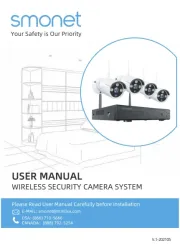
2 September 2025

2 September 2025
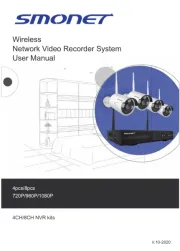
1 September 2025
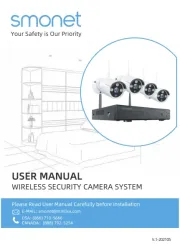
1 September 2025

1 September 2025
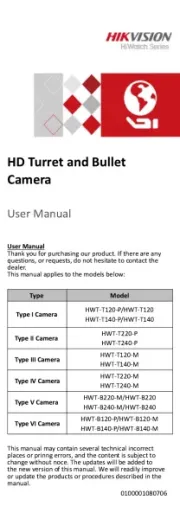
1 September 2025
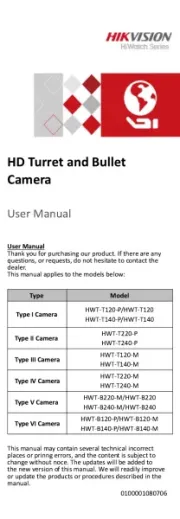
1 September 2025

1 September 2025